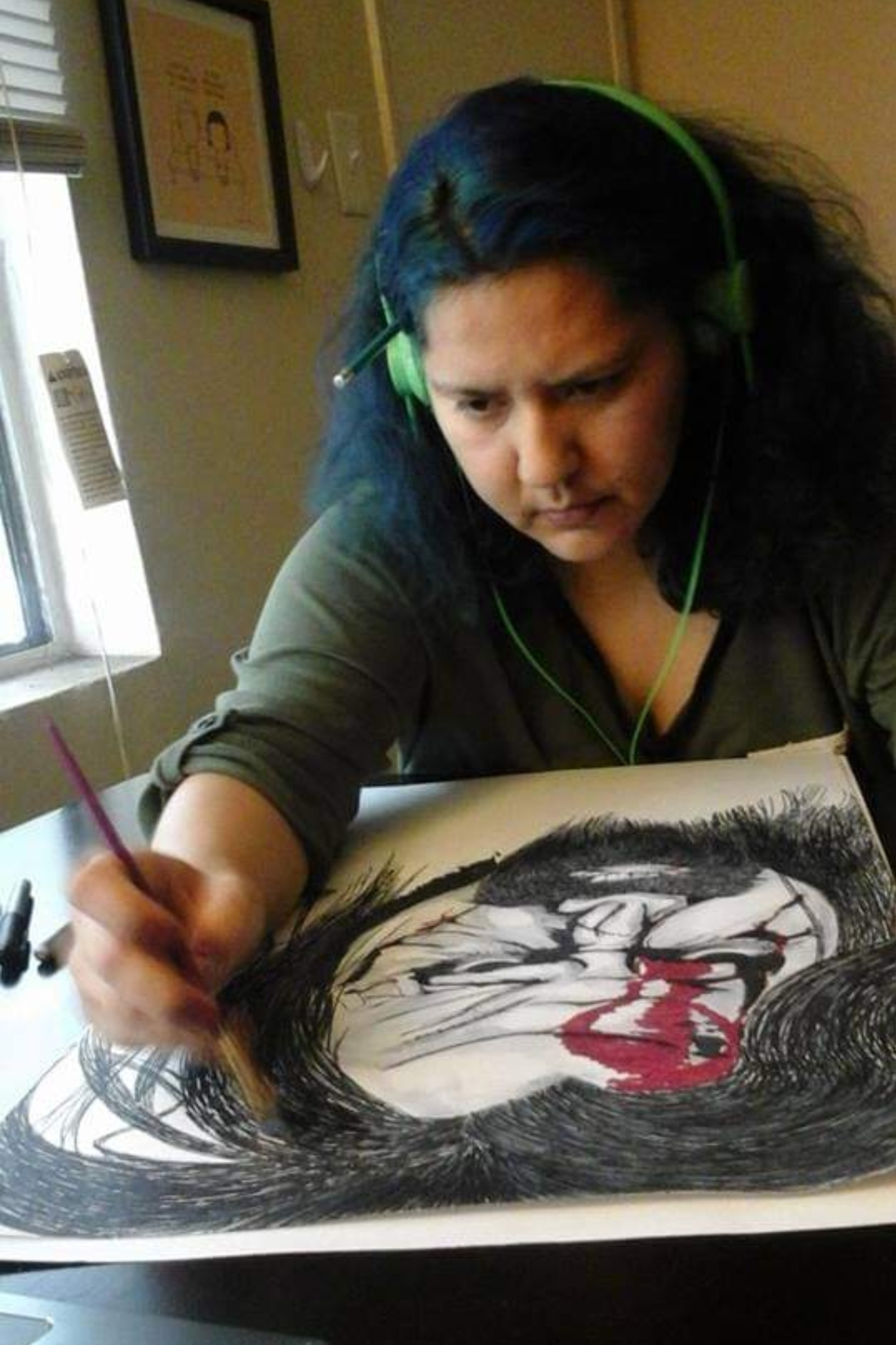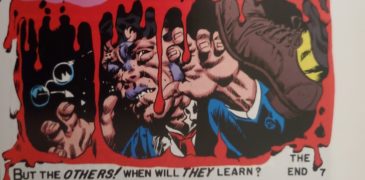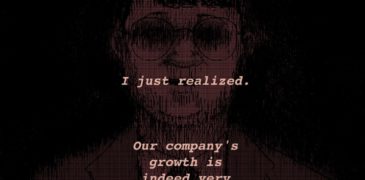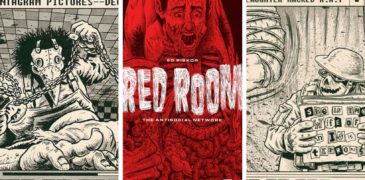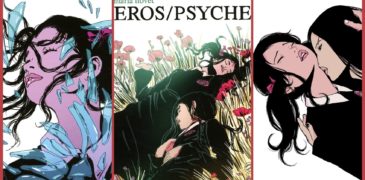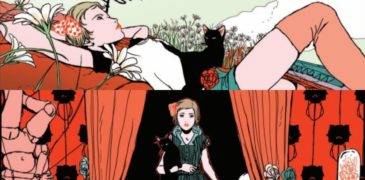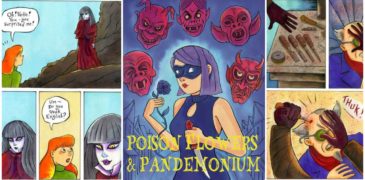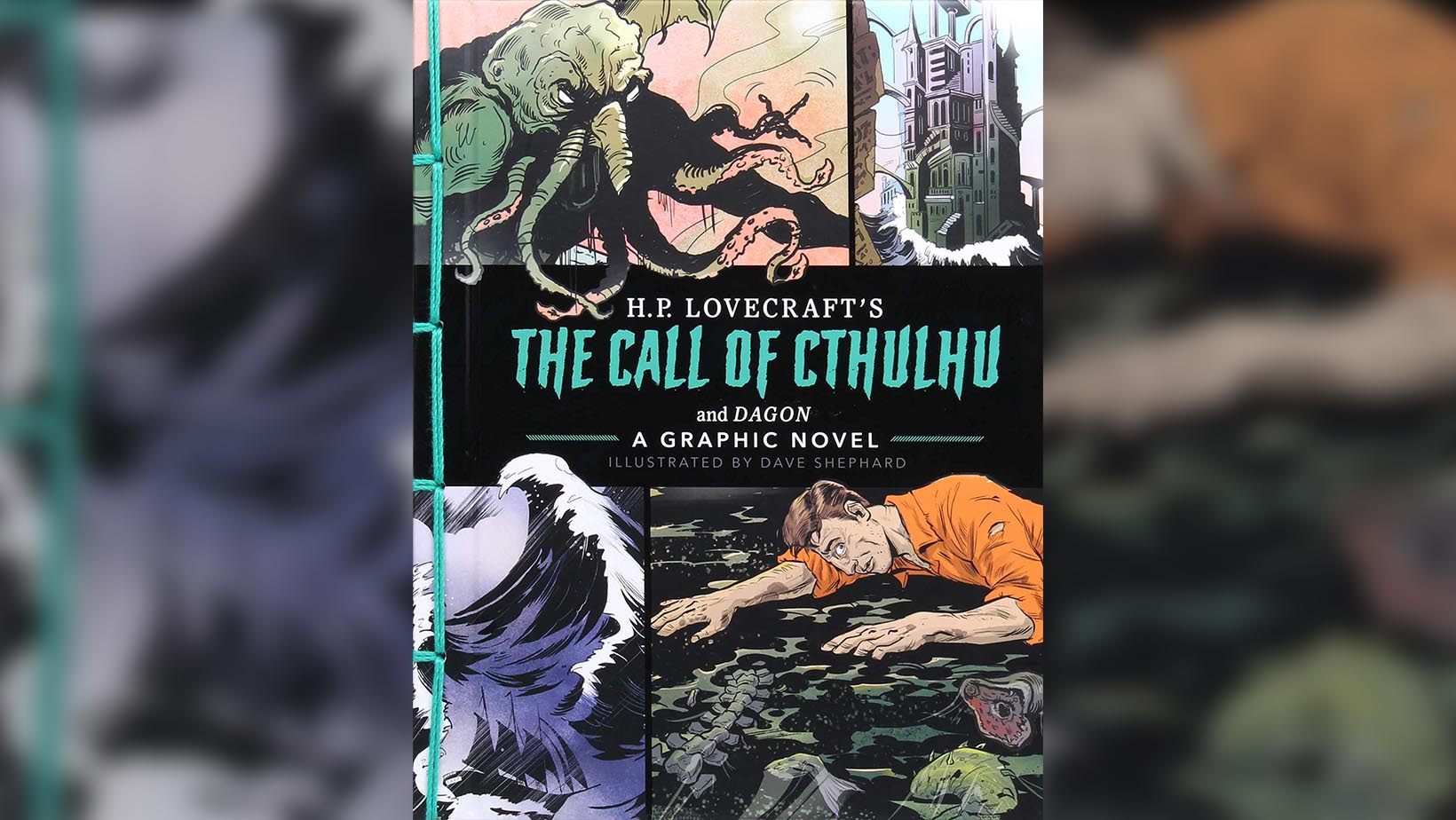
The name of Howard Phillips Lovecraft invokes various emotions among people today; adoration, disgust, interest, offense, suspense, and horror, to name a few. In my opinion, any talented author should have their audience feel these emotions. It is how we gain experiences that we usually would not have in our day-to-day lives. H.P. Lovecraft is genuinely an artist with words and a master of horror. Dagon and The Call of Cthulhu is the first hint or sign that a greater universe, that is, the Cthulhu Mythos, exists. I can say that a certain amount of giddiness flowed through me as I held this graphic novel illustrated by Dave Shephard in my hands. As a fan of the horror genre, it is mind-boggling not to know what has taken me so long to read these stories.
Dave Shephard illustrates the stories beautifully in the silver age style of comic art. The post-war style adds a certain age to both stories, which is appealing for the vintage sensibility. Readers can see the beginning use of more complex three-dimensional detail and shadowing. The improved emotional facial expressions can help the audience feel the character’s state of being, too, as events unfold. Furthermore, the contrasting use of both muted and vibrant colors delivers a more dramatic weight that draws the audience’s eyes toward the focus of the visuals. These connect well with the disturbing imagery that Lovecraft creates.
In Dagon, a morphine-addicted ex-naval captive writes his final attestation letter that notifies all who read it of the circumstances that led to his current situation and state of being. He explains that during the Great War, he had been traveling somewhere in the broad Pacific. There, he and his ship are taken out by the German Sea Raider. However, he escapes after a short time alone and is abandoned upon a skiff. Lost in the open ocean for an unknown number of days, he was without hope. Then, as he slept, he came to a strange island.
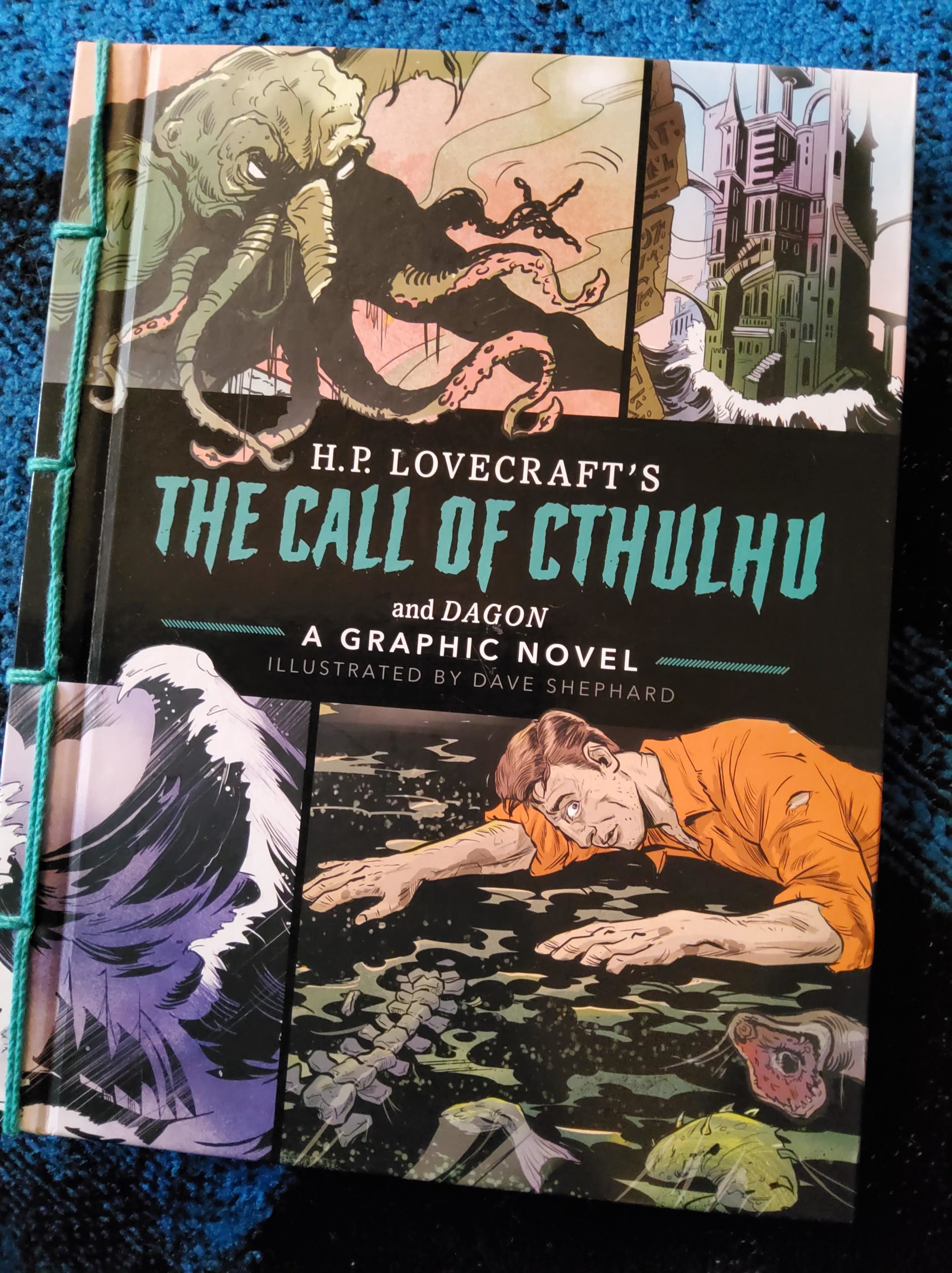
The story is written from the first-person point of view. In this case, the narrator remains nameless due to the use of the pronoun “I”. This point of view automatically reveals the main character’s thoughts and emotions intimately as the story progresses. Here, readers can witness the ultimate effect of his trauma and sense his growing desperation as sobriety along with clarity return to his fractured mind – we are fully exposed directly to the internal effects.
The mood immediately pushes readers into a sense of foreboding with the first sentence. Nothing is as unsettling as the knowledge of a person, either known or unknown, contemplating suicide. We need to know why. What is haunting this man? As the story continues, the isolation of being on a small boat in the open ocean instils readers with a nauseating sense of fear. The author continually builds upon the horror. Lovecraft does not simply tell a story; he aggressively holds his audience captive in his settings of horror.
In Call of Cthulhu, a talented sculptor and psychic, Henry Wilcox, has nightmares of grotesque, gargantuan monsters. Upon awakening, he creates a clay statuette resembling a horror he had seen. He then seeks the help of archaeologist Professor Angell for answers and presents him with his creation. After Henry explains the events of his dreams, the Professor agrees to meet him and record his dreams to find some meaning. On the twenty-third day, Henry misses his appointment. It is learned that he had become feverish during the night and screamed out about the horrors he envisioned while asleep, one of which resembled the statuette. Its name is Cthulhu. Over time, Professor Angell becomes obsessed with the meaning of the name and its connections, utterly unaware that such knowledge is fiercely guarded.
The suspense and mystery within this story are palpable. The reader’s curiosity is not only whetted but brought to a boiling point to know the secrets that are connected to Cthulhu. As events unfold, things become increasingly unsettling as we discover the hidden secrets. Still, both the characters and readers cannot stop in the pursuit of the unknown. What is frightening is that we know that those affected by Cthulhu have been driven to madness somehow or have met an unsavoury fate, and still, the characters choose to search for it.
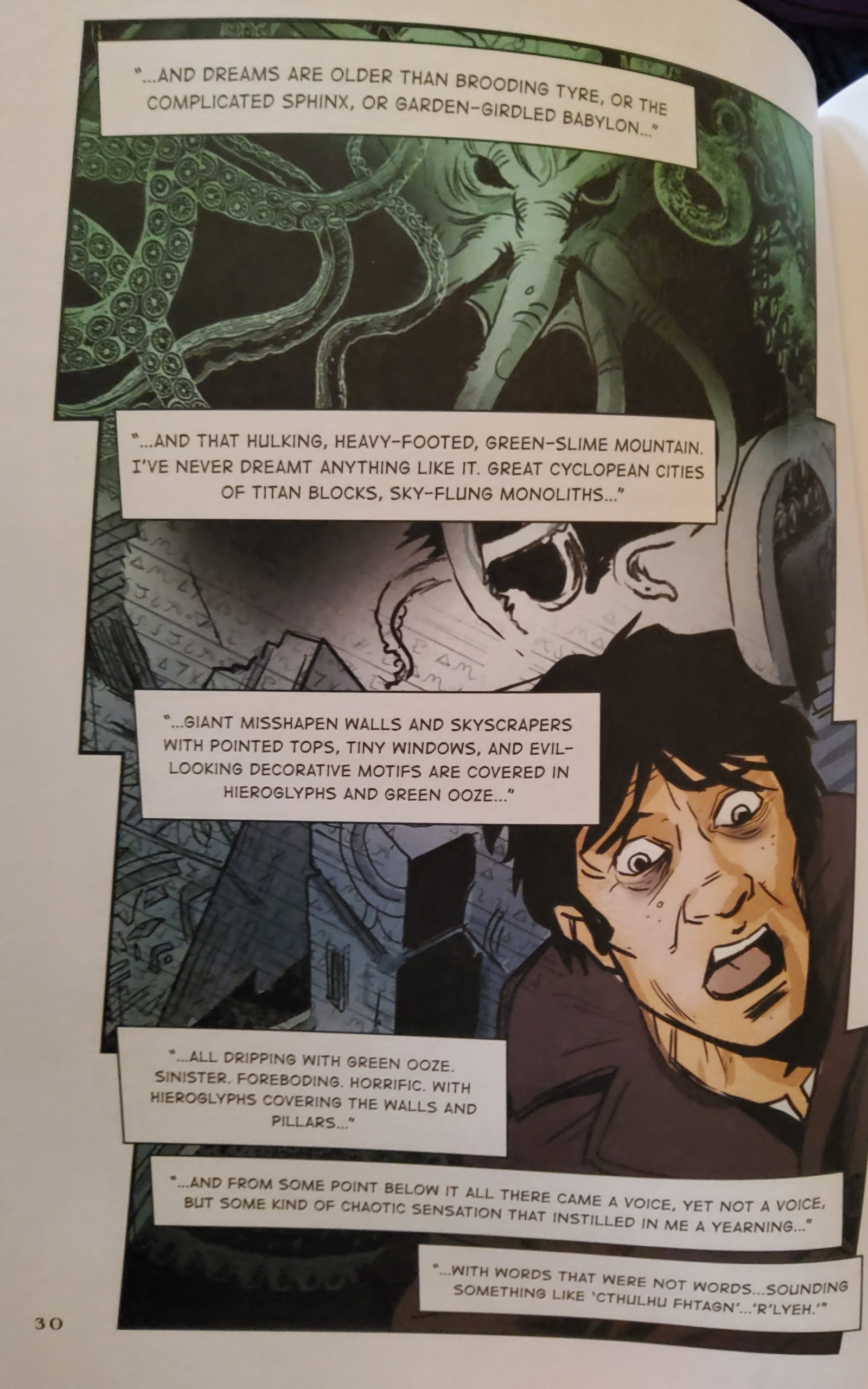
Dave Shephard’s graphic novel adds to the imagery of terror with what I call the gross factor. He does this with our senses. The sight of green ooze coating a city, as well as the feel of slime and tentacles, is enough to rack anyone with disgust. Add a dash of fire along with the smell of blood and death from a ritual sacrifice in a humid swamp forest, and we are all horrified. We are fearful and revolted.
The language used in this story is what I would consider formal. It is because our protagonist is working with other professionals. This formality helps the audience keep a certain kind of emotional control during the ongoing investigations. I feel this also allows readers to feel the seriousness of what is happening to the characters.
I cannot describe just how much I enjoyed this graphic novel. I absolutely loved the artwork. I highly recommend everyone who enjoys reading graphic novels, comics, and horror books to experience the genius of H.P. Lovecraft and the artistry of Mr. Dave Shephard. This book brings the nostalgia of reading older comic books together with the love of horror. Better yet, younger readers can get an introduction and idea of the world that Lovecraft creates with Mr. Shephard’s illustrations. Good times all around.
H.P. Lovecraft’s The Call of Cthulhu and Dagon is available as a physical book and e-book. Readers can find this book on Amazon, Barns and Nobel, and wherever books are sold. As always, your local library may have a copy or two to lend.
More Comic Reviews
When I found the EC Archives Shock Suspenstories published by Dark Horse Books, I had the most vivid memory return to me in my local comic book shop. I was… Indonesian comic creator/artist Azam Raharjo takes a look at the cosmic evil behind a company’s quick rise as their new venture in the restaurant industry sees uncanny success. While the… For as long as it has been a viable means for sharing media, the internet has been a fascination of the morbidly curious. Forums and sites set up on both… “My heart remained there, as if time stood still. For me… The Rose was always you.” Thus opens the elusive and spellbinding Eros/Psyche. The Rose is a mysterious all-girls school… The first issue of Porcelain wastes no time getting started, throwing our protagonist straight into peril with dazzling artwork. If you appreciate the aesthetic of dolls, roses, and girlish fantasy… As comic fans know, Fantagraphics has always been the go-to for something delightfully different, and Poison Flowers and Pandemonium is no different. This behemoth of a comic tome, ringing in…Comic Collection Review: EC Archives Shock Suspenstories Volume 1 by Bill Gains and Al Feldstein
The Consultant (2022) Comic Review – Cosmic Horror in the Office
Red Room: The Antisocial Network Volume One Review – Requiem for a Stream
Eros/Psyche Comic Review: Queer Love Meets Dark Fantasy Horror
Porcelain First Issue Comic Review- Do You Dare to Journey Inside the Dollhouse?
Poison Flowers and Pandemonium (2021) Comic Review: Magnificently Macabre
